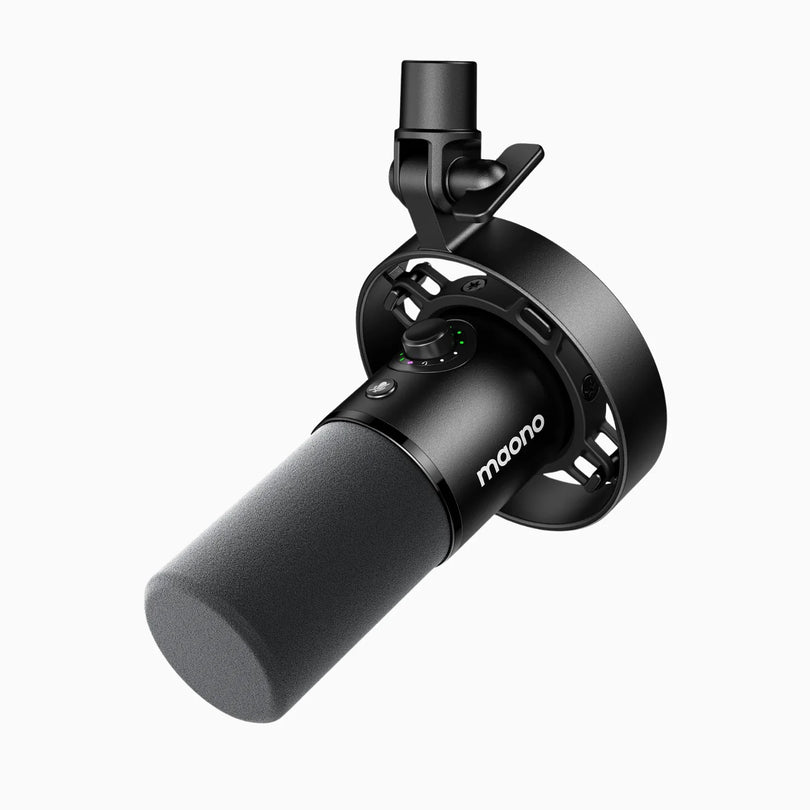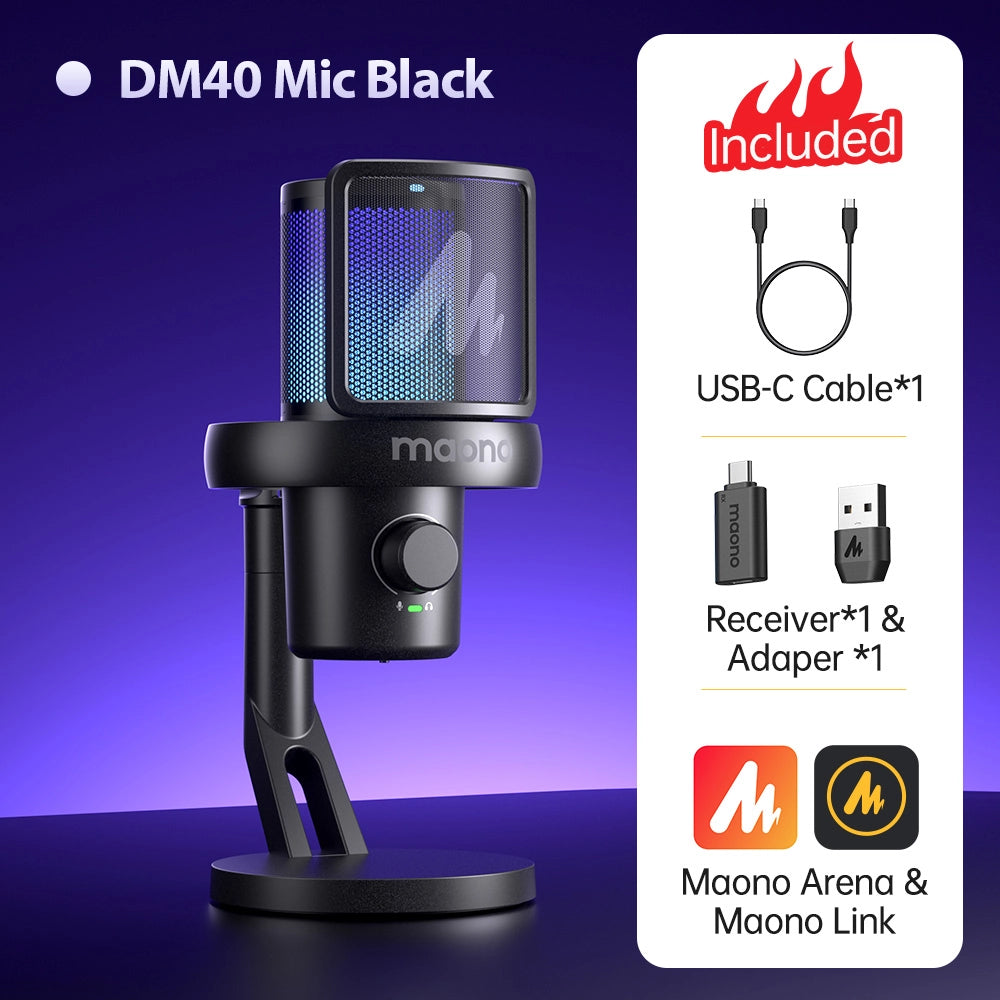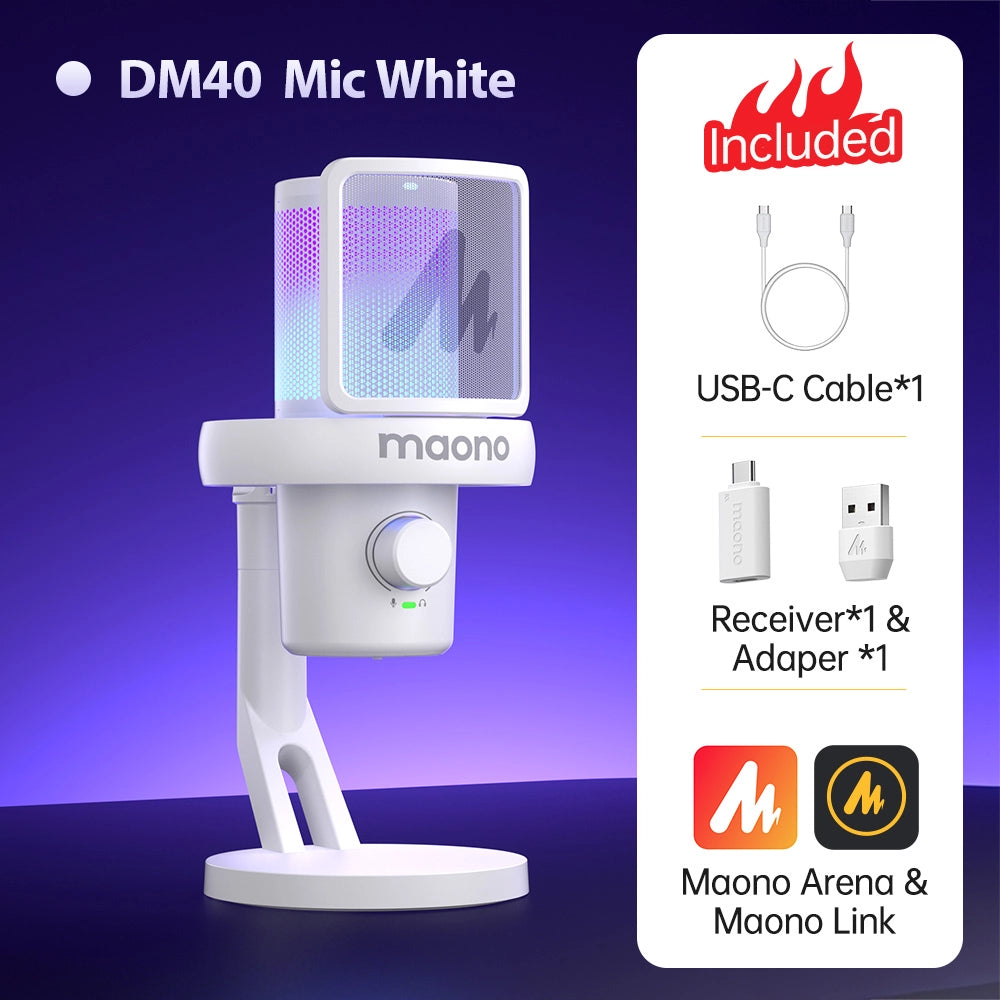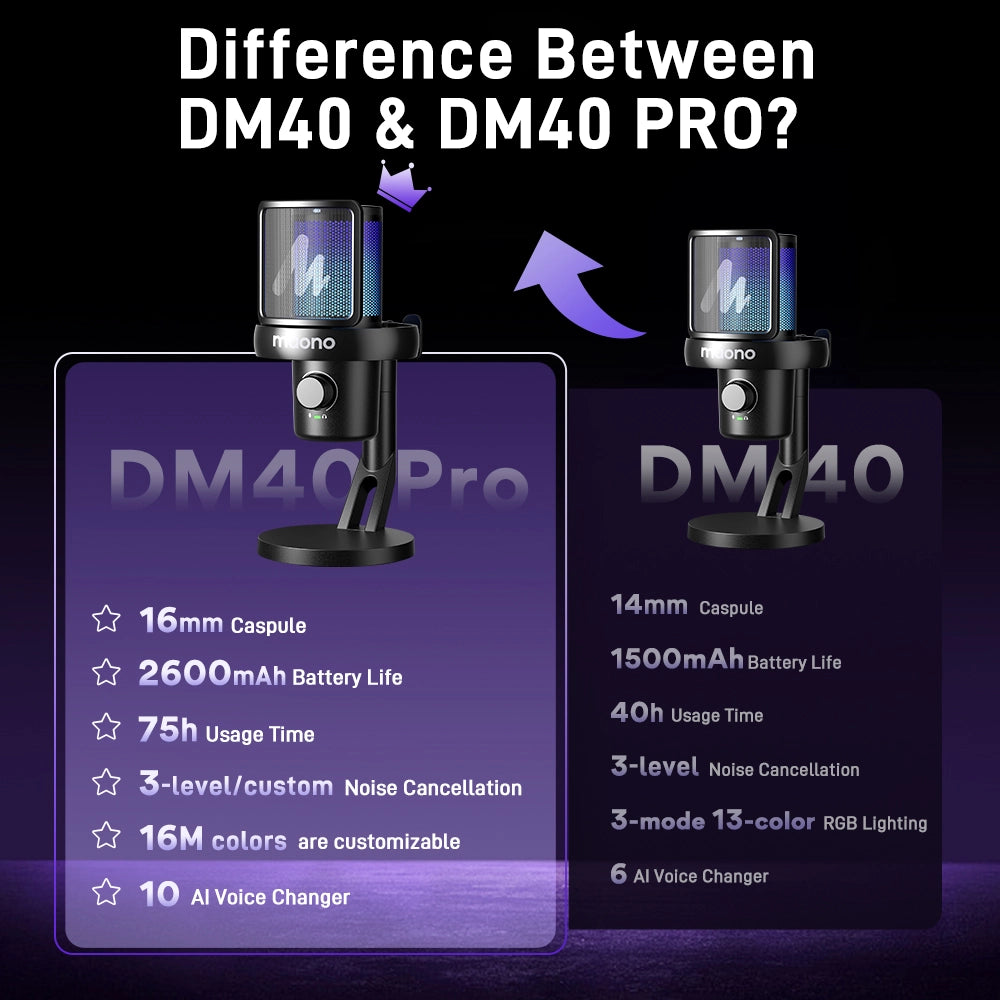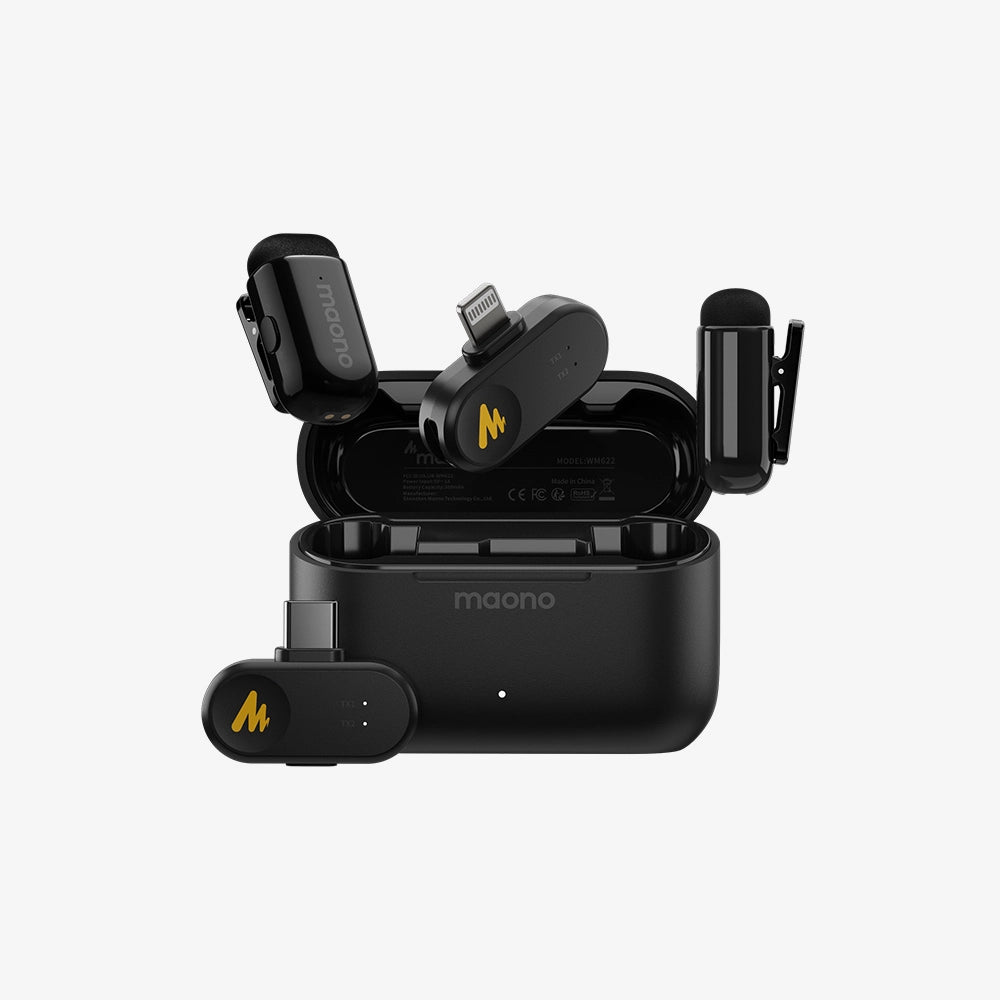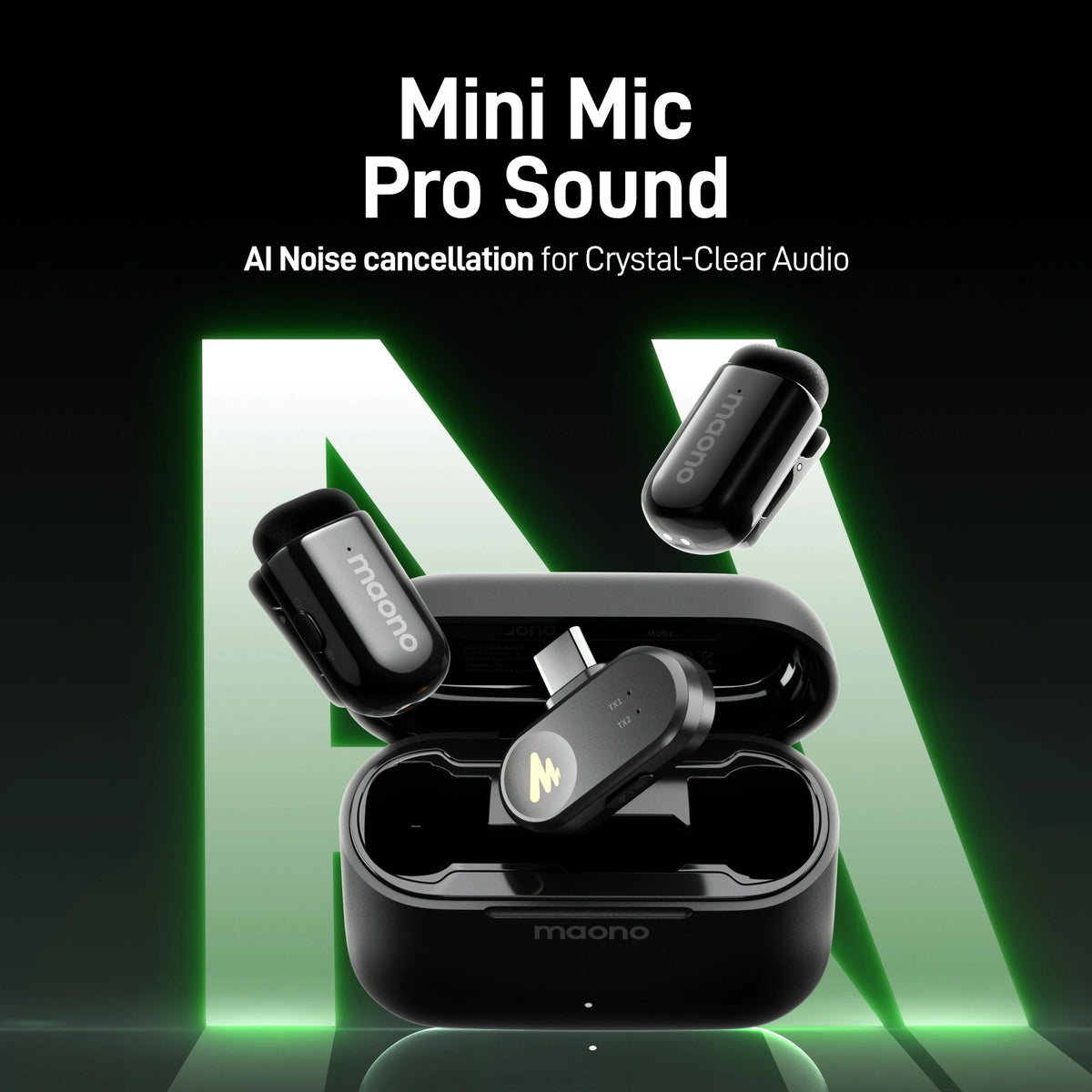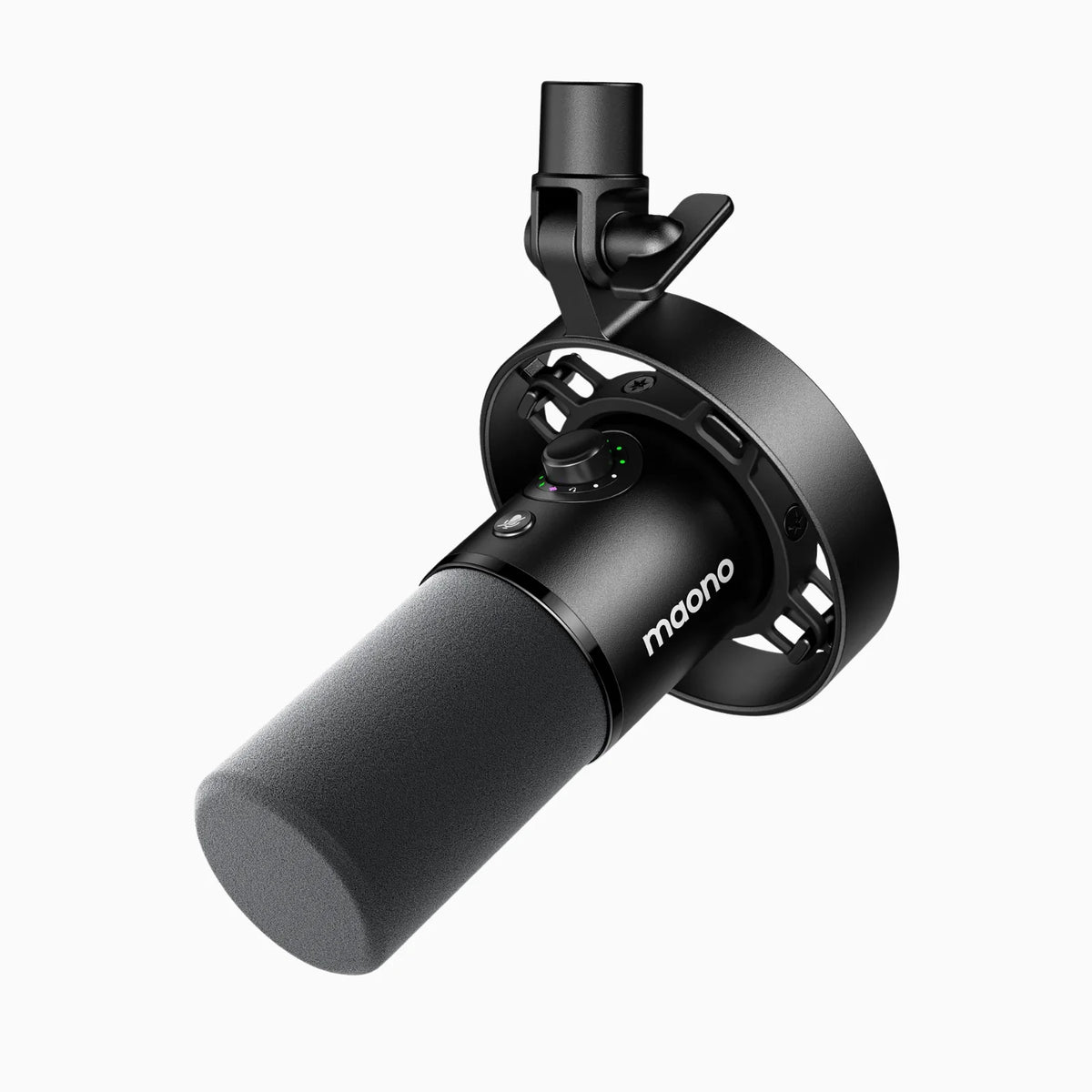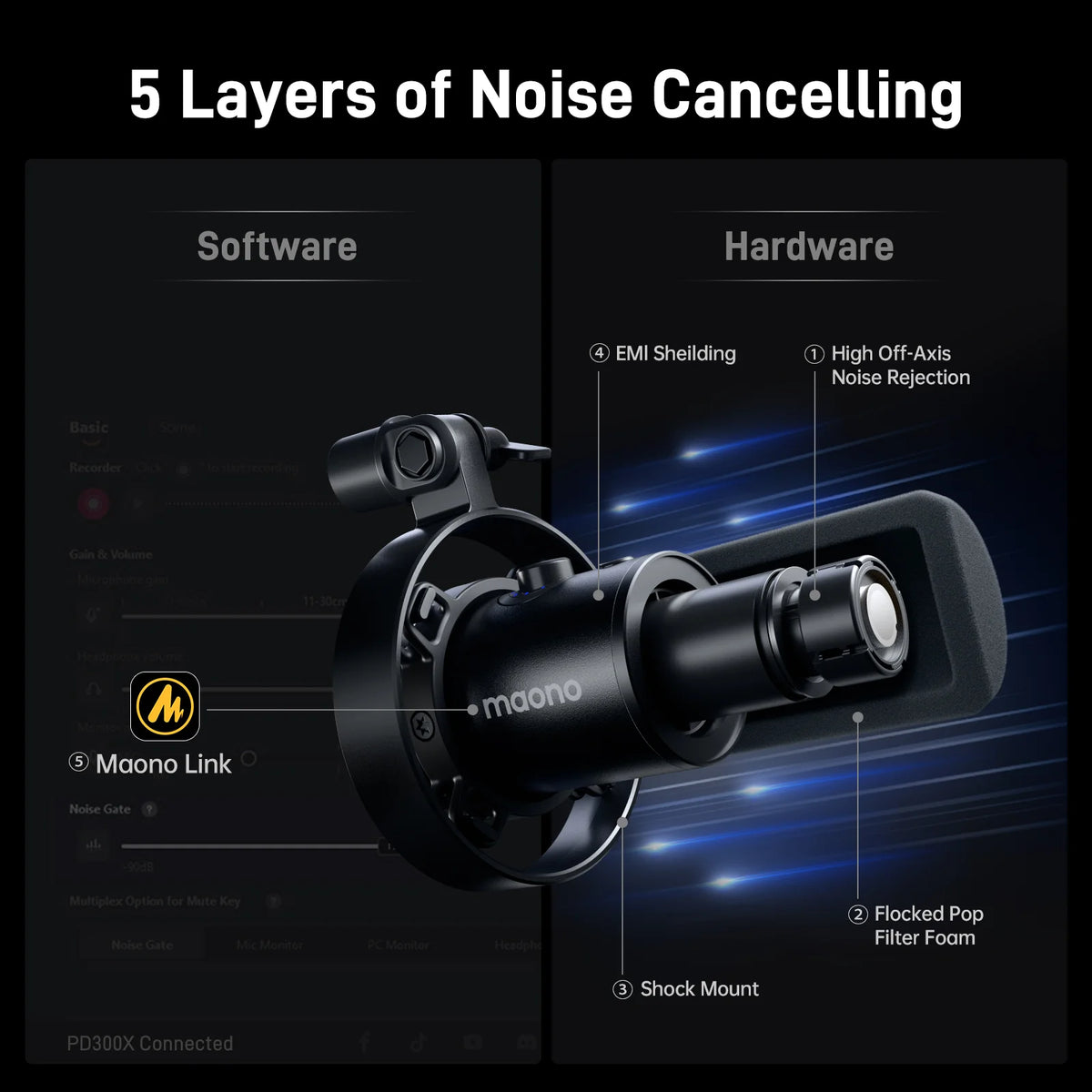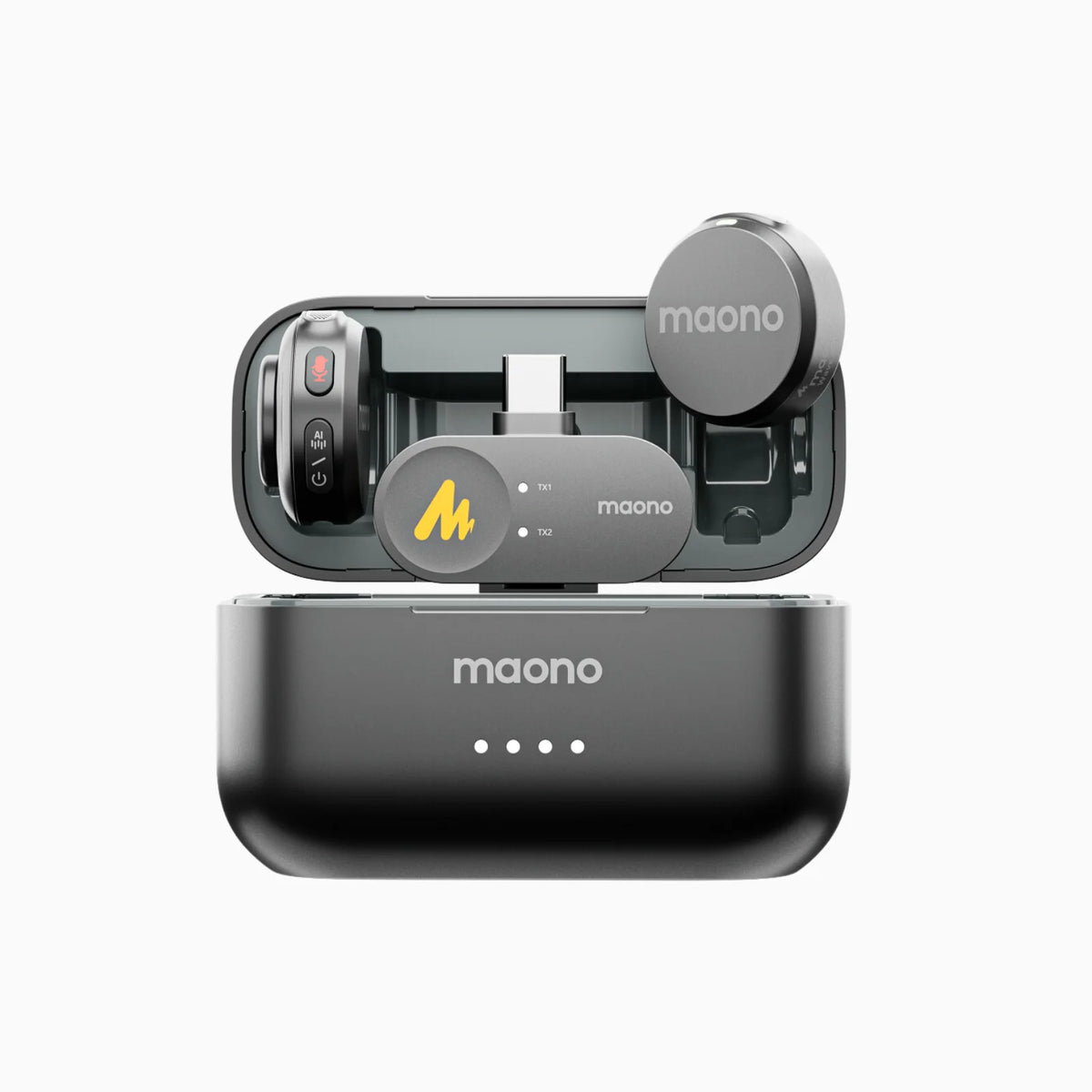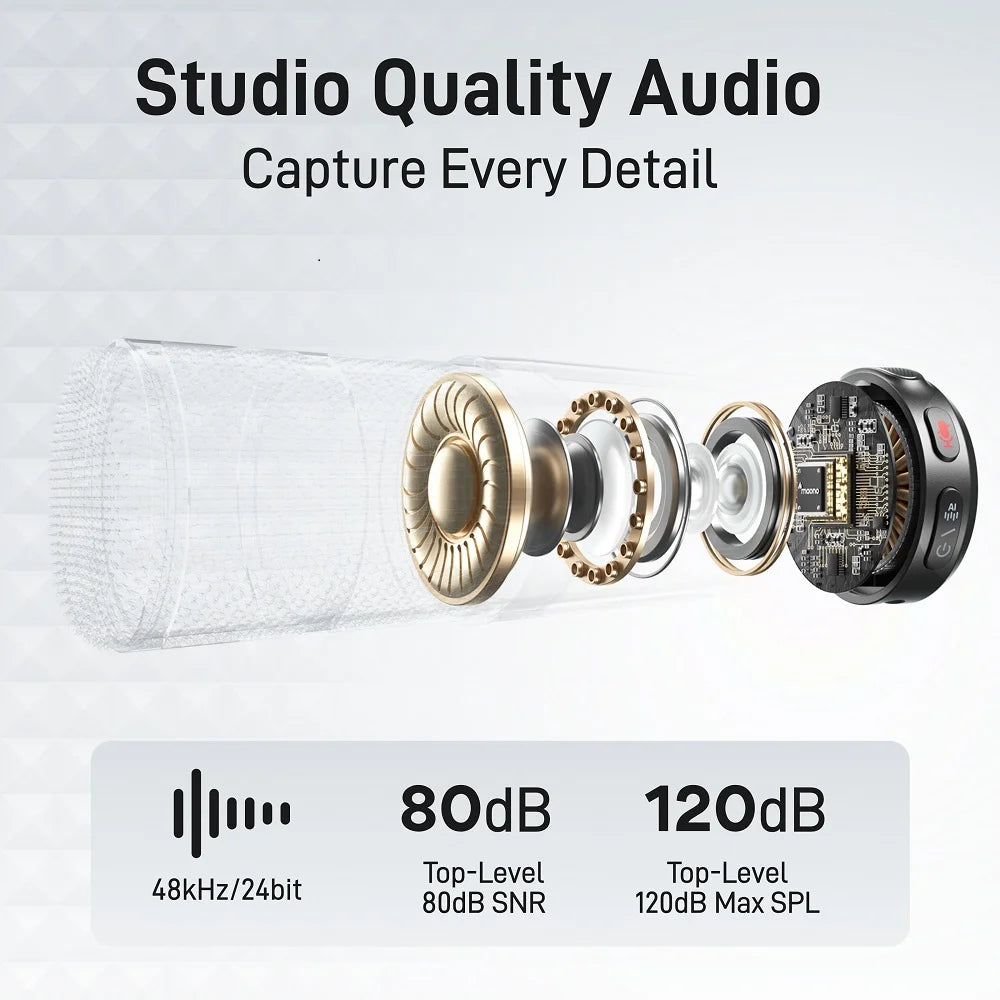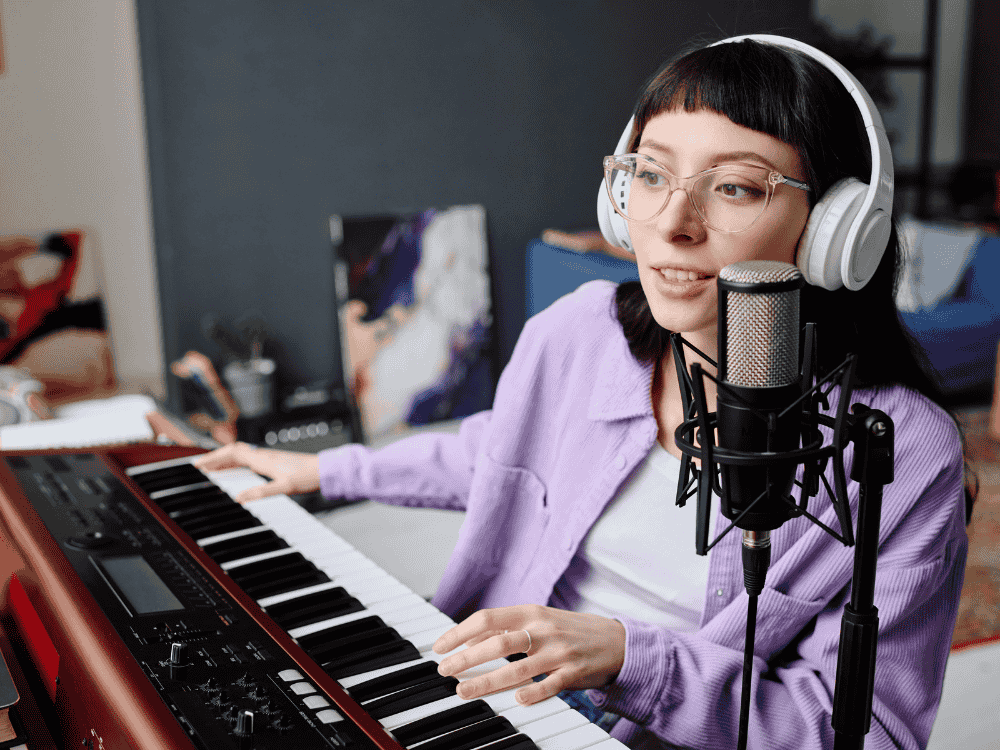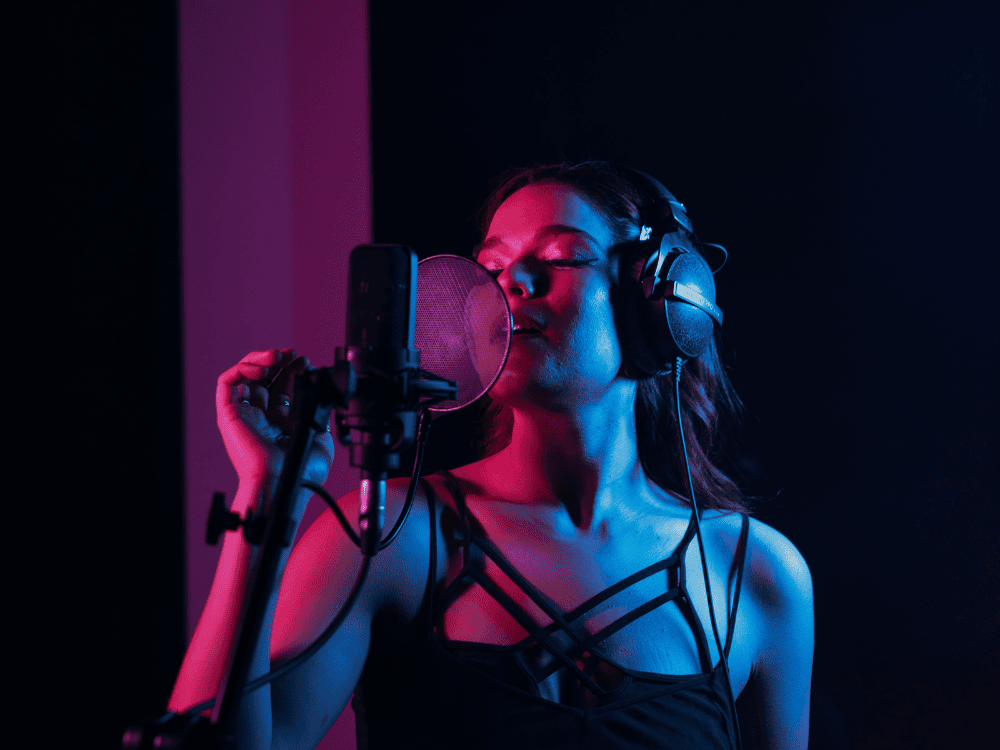We've already explored the 2025's Best USB Mic for Singing. Now let's explore the amazing things an XLR microphone can do to our voice, specifically a condenser XLR microphone with a cardioid pickup pattern.
If you're searching for the best condenser microphone, you came to the right place. Maono offers a collection of high-quality, microphone for singing options, ensuring you get the value for your money.
Our best picks: The Maono PM500 and Maono HD300T. Let's explore the features of these cardioid microphones and decide to choose the best condenser microphone for vocals.
When it comes to singing, capturing every nuance of your voice is crucial. One of the factors that contribute to pristine audio quality is low self-noise in cardioid microphones. But what does that mean? Low self-noise refers to the minimal amount of noise a condenser microphone generates internally, allowing for a cleaner, more professional sound.
Singers often face a crucial decision: should they opt for a USB microphone or an XLR microphone? This leads to the common debate of usb mic vs xlr—which one is better for singing? USB microphones are plug-and-play, making them convenient for beginners, but they can lack the depth and flexibility required for professional recordings. XLR condenser microphones, on the other hand, offer superior sound quality, enhanced noise control, and greater adaptability when used with an audio interface or mixer.
For serious vocalists, an XLR condenser microphone is the best choice. These microphones capture more detail, have lower self-noise, and provide a professional-grade sound that enhances recordings. Whether you're recording music at home, live streaming, or uploading covers to TikTok or YouTube, an XLR mic ensures your voice shines through clearly and naturally.
USB Mic vs. XLR: Which One is Better for Singing?
Both USB and XLR microphones have their place in music production, but for singing, XLR mics often take the lead. USB microphones are convenient and easy to use, as they connect directly to a computer. However, XLR microphones offer superior sound quality, greater customization, and lower noise levels when paired with a quality audio interface or mixer. XLR mics also provide more flexibility for professional recording setups, making them a preferred choice for serious vocalists.
Why Choose an XLR Condenser Microphone for Singing?
XLR condenser microphones are favored among singers for several reasons:
-
High Sensitivity
It captures subtle vocal details.
-
Low Self-Noise
It ensures a clean recording with minimal background noise.
-
Professional Sound Quality
It can be used in studios for rich, dynamic vocals.
-
Greater Control
Works with audio interfaces and preamps for customized sound shaping.
If you're aiming for high-quality singing recordings, an XLR condenser mic is a solid investment.
Can I Use an XLR Microphone for Doing Covers on TikTok or YouTube?
Absolutely! Cardioid microphones are widely used by professional and aspiring singers for cover songs on platforms like TikTok and YouTube. While a USB microphone might be more convenient, an XLR mic offers greater control over vocal nuances, allowing you to produce studio-quality recordings.
By pairing an XLR microphone with an audio interface, singers can access advanced sound processing features, making it easier to reduce background noise, enhance clarity, and fine-tune their recordings. If you're aiming for a polished, high-quality sound that stands out on TikTok or YouTube, an XLR condenser microphone is a solid investment.
What Features Should I Look for in a Noise Reduction Microphone?
To achieve a clean, professional recording, consider these key features in a noise reduction mic:
-
Cardioid Polar Pattern
The pickup pattern focuses on the singer’s voice while rejecting background noise.
-
Low Self-Noise
A mic with low self-noise reduces unwanted hissing and electronic background noise.
-
High Sensitivity
Captures vocal nuances and dynamics.
-
Shock Mount Compatibility
Helps eliminate vibrations and handling noise.
-
Pop Filter Inclusion
Reduces plosive sounds (like ‘p’ and ‘b’ sounds).
-
Frequency Response
A broad range (20Hz – 20kHz) is ideal for capturing vocal details.
Which Microphone Has the Best Noise Reduction for Vocalists?
Several XLR condenser microphones stand out for their noise reduction capabilities. Here are a few top choices:
-
Shure SM7B – Known for its exceptional noise isolation and rich vocal clarity.
-
Audio-Technica AT4040 – Offers low self-noise and an extended frequency response.
-
Neumann TLM 102 – Delivers studio-quality vocals with minimal background noise.
-
Rode NT1 – One of the quietest cardioid condenser microphone options, offering ultra-low self-noise.
-
Aston Origin – Features built-in shock absorption and excellent sound isolation.
-
Maono HD300T and Maono PM500 are excellent professional singing microphones with the best noise reduction for its cardioid microphone pickup pattern.
Each of these microphones is highly regarded for studio recording, ensuring that your vocals sound clean and professional.
What is the Best Budget Noise Reduction XLR Microphone for Singing?
If you're on a budget but still want excellent noise reduction, consider these options:
For those looking for high-quality sound on a budget, the Maono PM500 and Maono HD300T XLR microphones are excellent choices.
Maono PM500
The Maono PM500 is a premium cardioid condenser microphone designed for high-fidelity vocal recording. Here’s why it stands out:
-
Cardioid Polar Pattern
Effectively isolates vocals while reducing background noise.
-
Low Self-Noise
Ensures clear, professional-quality sound.
-
Extended Frequency Response
Captures deep lows and crisp highs, perfect for singing.
-
Sturdy Metal Build:
Ensures durability and longevity.
This microphone is an excellent choice for TikTok and YouTube covers, providing a studio-like quality at a budget-friendly price.
Maono HD300T
The Maono HD300T is a dynamic microphone for singing that features XLR/USB hybrid connectivity, offering flexibility for beginners and professionals alike:
-
Dynamic Cardioid Design
A cardioid microphone rejects background noise effectively, making it ideal for untreated rooms.
-
Dual Connectivity (XLR & USB)
Provides versatility for plug-and-play convenience or professional interface setups.
-
Built-in Pop Filter
Reduces plosive sounds, ensuring a smooth vocal tone.
-
Shock-Resistant Build
Reduces handling noise, making it perfect for live streaming and recording.
For singers looking to create high-quality content on TikTok or YouTube without breaking the bank, the Maono HD300T is a great entry-level choice. Each of these microphones offers good performance for vocalists without breaking the bank.
Conclusion
Choosing the right microphone for singing is essential for capturing the true essence of your voice. While USB microphones are convenient, XLR microphones offer superior sound quality, making them the preferred choice for serious vocalists. Investing in a noise-reduction microphone with low self-noise, a cardioid polar pattern, and high sensitivity ensures that your recordings stand out.
Selecting the best XLR or cardioid microphone for singing in 2025 depends on your budget, recording environment, and desired sound quality. XLR microphones, especially condenser models, provide superior clarity, lower noise levels, and greater customization compared to USB mics. Whether you're recording for professional albums or creating covers for TikTok and YouTube, investing in a quality XLR microphone ensures that your vocals stand out with exceptional sound quality. Consider your needs and budget, and choose a mic that best suits your singing style and recording setup.
For those on a budget, the Maono PM500 and Maono HD300T provide exceptional value, making them ideal for TikTok and YouTube singers. Whether you're recording covers, performing live, or creating studio-quality content, an XLR microphone is a game-changer for your vocal journey in 2025.




